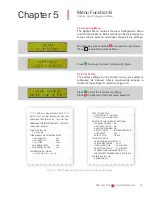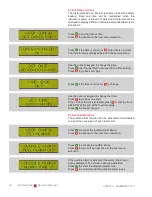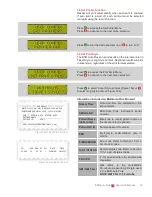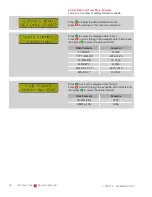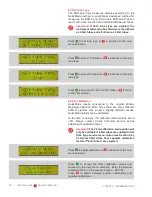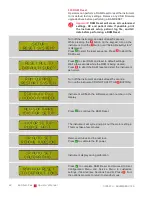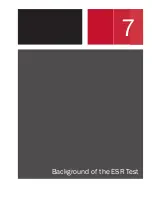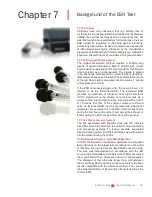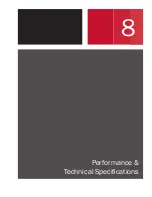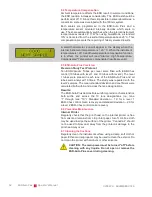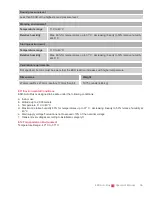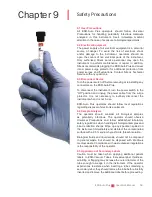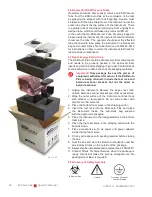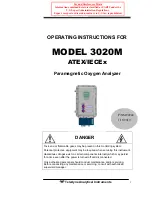
ESR-Auto Plus Operator’s Manual 45
Chapter 7
|
Background of the ESR Test
7.1 The History
Clinicians have long observed that the settling rate of
erythrocytes in anticoagulated blood is affected by disease.
Initially, the sed-rate test was used as a pregnancy test, but
was later found to be unsatisfactory for that purpose. Instead,
ESR gained its reputation in the battle against infections,
particularly tuberculosis. Its use and importance as a marker
of inflammation was highly enhanced by the standardized
procedure established by Alf Vilhelm Westergren, a Swedish
physician. His method is still considered “the gold standard.”
7.2 The Original 200mm System
The original Westergren method requires a 300mm long
pipette of certain dimensions, filled to 200mm with a well-
mixed solution consisting of 75% blood and 25% 0.25mmol/L
citrate solution as an anticoagulant. The pipette is placed
in an absolutely vertical position, protected from vibrations,
temperature changes and sunlight. The sedimentation length
of the red blood cells is measured at 60 minutes ± 1 minute
and expressed in mm/hr.
If the ESR is measured again after the second hour, it is
referred to as the “Extended ESR.” The Extended ESR
provides an indication of influence from high hematocrit
(HCT). Hematocrit is the volume of red blood cells as a
percent of the total sample volume. A sample with an HCT
of 70 means that 70% of the sample volume is red blood
cells. An Extended ESR result is expressed as a fractional
parameter. For example 10/15 or 40/40, which means 10mm
during the first hour and another 5mm during the second, or
40mm during the first hour and 0mm during the second.
7.3 The 100mm Vacuum System
The risk associated with hepatitis virus and HIV infected
blood has forced the attention to automatic blood sampling
and processing systems. To reduce hazards, evacuated
blood collection systems of different designs were introduced
into the market during the 1980s.
7.4 BD Standard Scale v. QuickMode Method
In 1985, the Swedish nurse Barbro Hjalmarsson persuaded
Becton Dickinson, the largest tube manufacturer in the world
at that time, to promote her evacuated blood collection tube.
The tube was manufactured in accordance with the BD
vacuum tube standards and consisted of a 120mm evacuated
tube, pre-filled with an adequate volume of anticoagulant.
The diameter of this tube was larger than a Westergren
tube, and the system required a conversion scale to produce
results compatible with the reference method. The vacuum
tube collected 100mm of blood and is often referred to as the
100mm ESR.
Summary of Contents for ESR-Auto Plus 506
Page 1: ...ESR Auto Plus Operator s Manual Model 506 v 1 0 2 0 ...
Page 2: ......
Page 6: ......
Page 7: ...1 Introduction ...
Page 8: ......
Page 12: ......
Page 13: ...2 Sample Preparation Analysis ...
Page 14: ......
Page 20: ......
Page 21: ...3 Keypad Menu Overview ...
Page 22: ......
Page 24: ......
Page 26: ......
Page 36: ......
Page 38: ......
Page 44: ......
Page 51: ...7 Background of the ESR Test ...
Page 52: ......
Page 56: ......
Page 57: ...8 Performance Technical Specifications ...
Page 58: ......
Page 65: ...9 Safety Precautions ...
Page 66: ......
Page 69: ...10 Troubleshooting ...
Page 70: ......
Page 75: ...11 Quick Reference Guide ...
Page 76: ......
Page 80: ......
Page 82: ......
Page 84: ......
Page 85: ......
Page 86: ......

